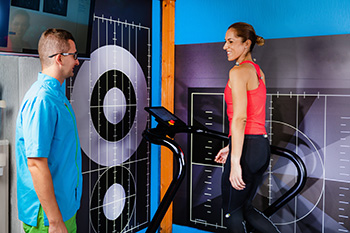
Understanding your gait, or the way you run, can improve your running technique. As a runner, you have likely developed your own style, but analyzing your gait can reveal areas for performance enhancement and injury prevention. During analysis, a podiatrist would typically start by observing your running pattern on a treadmill, paying close attention to the movements of your lower limbs, pelvis, and trunk. They may use video recording or specialized motion analysis software to capture and analyze your gait in detail. They also may conduct physical examinations to assess your joint mobility, muscle strength, and any structural abnormalities that could affect your running mechanics. By combining these observations with your medical history and any reported symptoms, the podiatrist can identify specific areas of concern and develop a tailored treatment plan. This plan may include exercises to improve muscle strength and flexibility, recommendations for footwear or orthotics to provide support and alignment, and guidance on proper running technique. If you experience recurring discomfort or want to maximize your running potential, it is suggested that you schedule an appointment with a podiatrist for an evaluation of your gait, and suggestions for improving it.
If you have any concerns about your feet, contact one of our podiatrists from Livingston Foot Care Specialists. Our doctors can provide the care you need to keep you pain-free and on your feet.
Biomechanics in Podiatry
Podiatric biomechanics is a particular sector of specialty podiatry with licensed practitioners who are trained to diagnose and treat conditions affecting the foot, ankle and lower leg. Biomechanics deals with the forces that act against the body, causing an interference with the biological structures. It focuses on the movement of the ankle, the foot and the forces that interact with them.
A History of Biomechanics
- Biomechanics dates back to the BC era in Egypt where evidence of professional foot care has been recorded.
- In 1974, biomechanics gained a higher profile from the studies of Merton Root, who claimed that by changing or controlling the forces between the ankle and the foot, corrections or conditions could be implemented to gain strength and coordination in the area.
Modern technological improvements are based on past theories and therapeutic processes that provide a better understanding of podiatric concepts for biomechanics. Computers can provide accurate information about the forces and patterns of the feet and lower legs.
Understanding biomechanics of the feet can help improve and eliminate pain, stopping further stress to the foot.
If you have any questions please feel free to contact our office located in North Bellmore, NY . We offer the newest diagnostic and treatment technologies for all your foot and ankle needs.